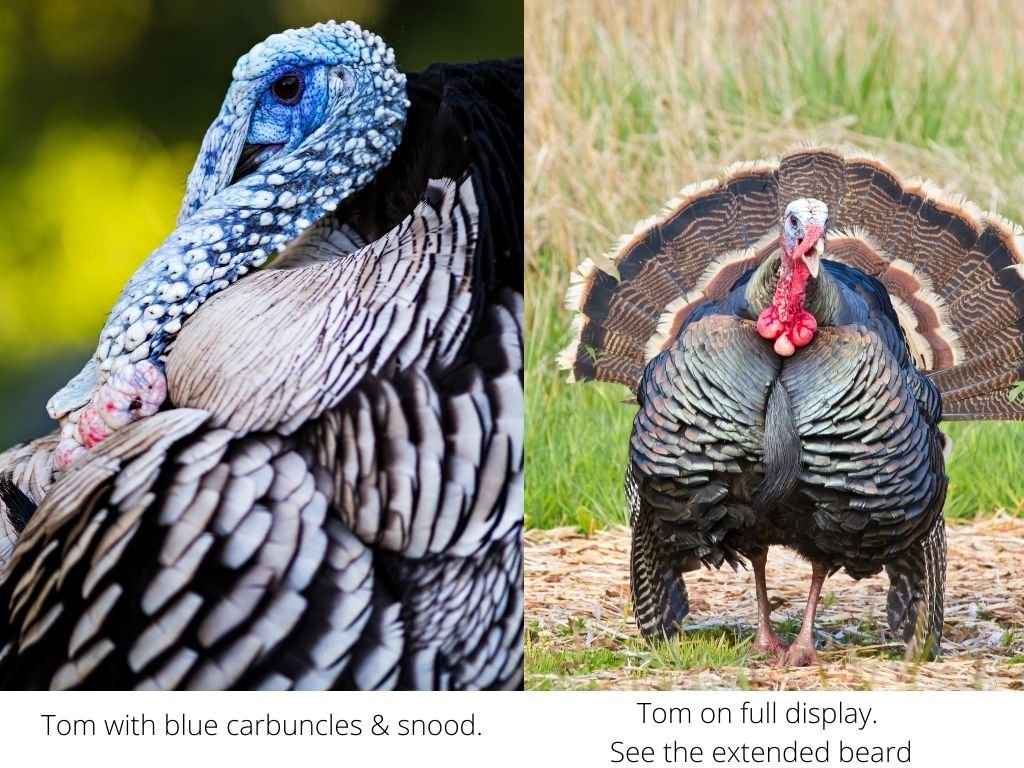It’s Time to Talk About Turkeys
Curious facts about Thanksgiving turkeys.
I’ve known—and enjoyed quite a few actual turkeys. When I was a young woman, I moved to the country with my husband and baby son. We were idealistic and eager to join the back-to-the-land movement we read about in Mother Earth News.
First, we decided to get some goats.
Then chickens, ducks, pigs, cows, and finally, some turkeys. As a novice farmer, I figured all poultry was the same, just like a golden retriever and a poodle are both dogs.
Each species is unique, and turkeys are very different than chickens. They reliably imprint on humans, but it seems to happen a bit later than the 12–17 hours after hatching that Konrad Lorenz described in his experiments with Greylag geese.
My turkeys would sit on my lap, and I had to sneak out of their sight.
We had bought them, hoping they would consume the hoards of grasshoppers on our organic vegetable farm. So I would lead them out to the fields, and they’d get busy eating pests, but as soon as they realized I’d left them alone, they’d start calling frantically and run out of the fields like small ostriches.
If we didn’t pen them up, they’d get in the way as we harvested and washed the vegetables. When I sat down for a break, they’d fight to perch on my lap. Needless to say, these were the last turkeys we raised to sell for Thanksgiving. They became entirely too much like pets.
Here are other fascinating turkey facts you may not know.
There are 20 recognized heritage breeds of turkeys, and they each have unique characteristics. In addition, there are hybrids grown for the mass turkey market, such as Broad-breasted Whites.
Baby turkeys, called poults, are susceptible to cold and dampness.
Poults require a diet much higher in protein, 28%, than chickens, ducks, or geese. They are voracious insect eaters and don’t scratch up your garden.
Yes, turkeys can fly quite to roost in tall trees or on roofs. Smaller breeds can fly higher than the big ones.
5. Turkeys are very friendly and enjoy hanging around humans.
6. How long can a turkey live? At least ten years.
7. Did you know a turkey tom has a snood that extends over the top of its beak? It grows each year, up to five inches long. It can be extended and retracted.
8. The warty bumps all over the head and neck are called caruncles. The larger they are, the higher the tom’s testosterone level. Snood and caruncles can turn bright blue when the bird is excited.
9. Have you ever seen a tom turkey’s beard which it can extend to show off? Each year it becomes longer, reaching up to a foot in length.
10. Male turkeys do a stomp dance to intimidate other toms. It is imposing as each tom will extend its tail and wings for maximum visibility. Their comb, wattles, and snood become bright red, and they gobble excitedly as they stomp and raise and lower their wings.
11. Yes, female turkeys, known as hens, lay eggs even if no males are around. And you can eat the eggs just like those from chickens. However, the whites will never beat into a meringue for some reason.
Turkey is nutrient-rich, high-protein meat and if you do not become too fond of your turkeys, you can certainly eat them.
Turkey is rich in nutrients, and two or three ounces will have 190–230 calories depending on whether it’s white or dark, with skin or without. In addition, it will provide about 24 grams of protein. The meat is high in B3, B6, B12, and trace minerals. Overall, quite good for you.
If you are a meat-eater, enjoy your turkey, and I hope you’ve learned something new.
I believe I’ll enjoy a tofurkey this year!
Need another Thanksgiving recipe?




